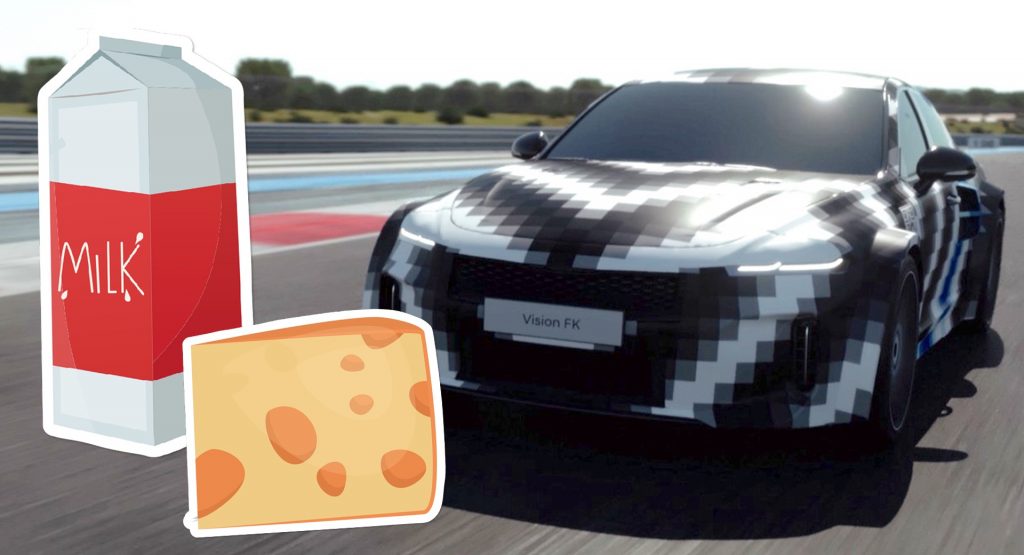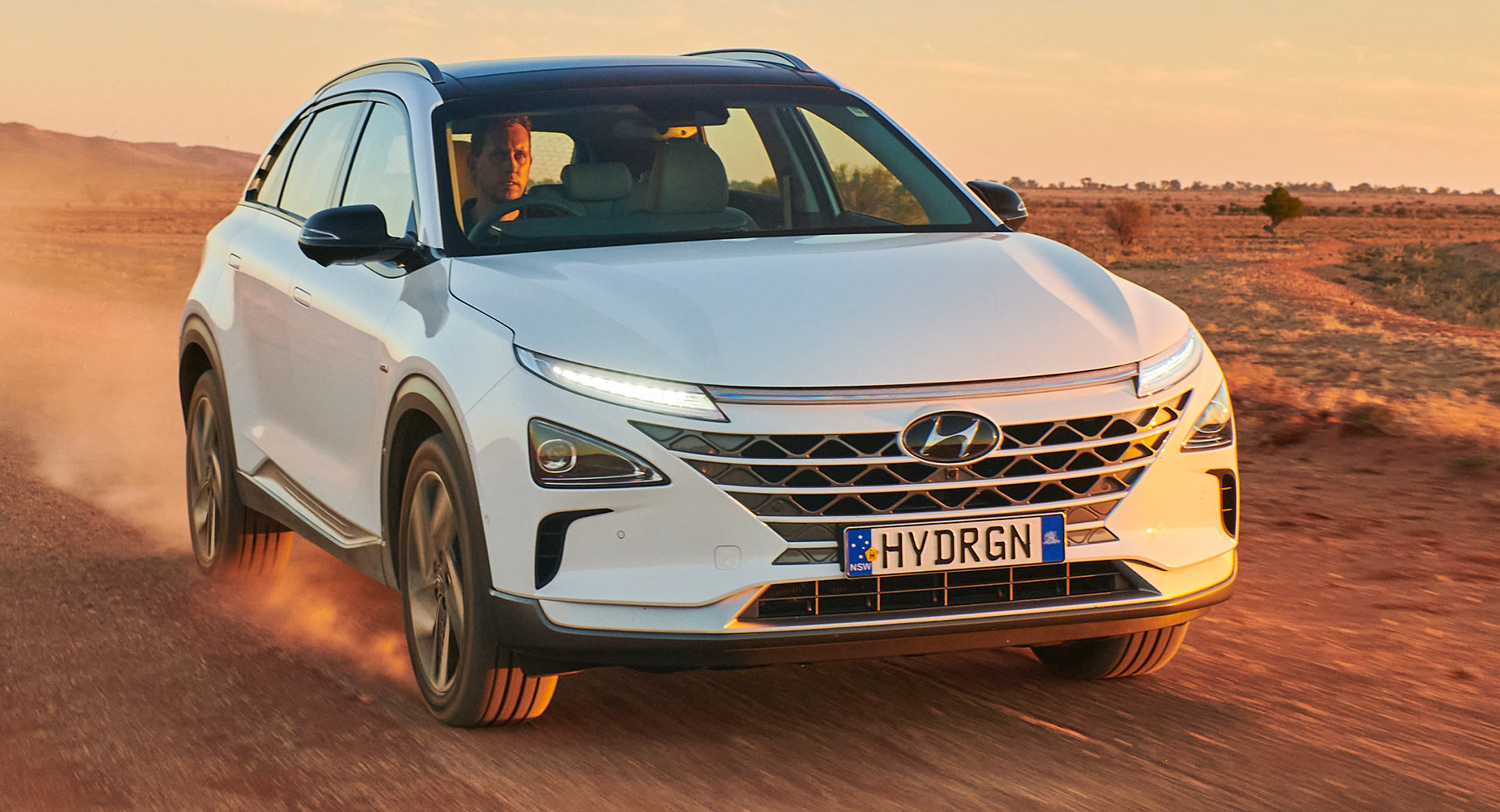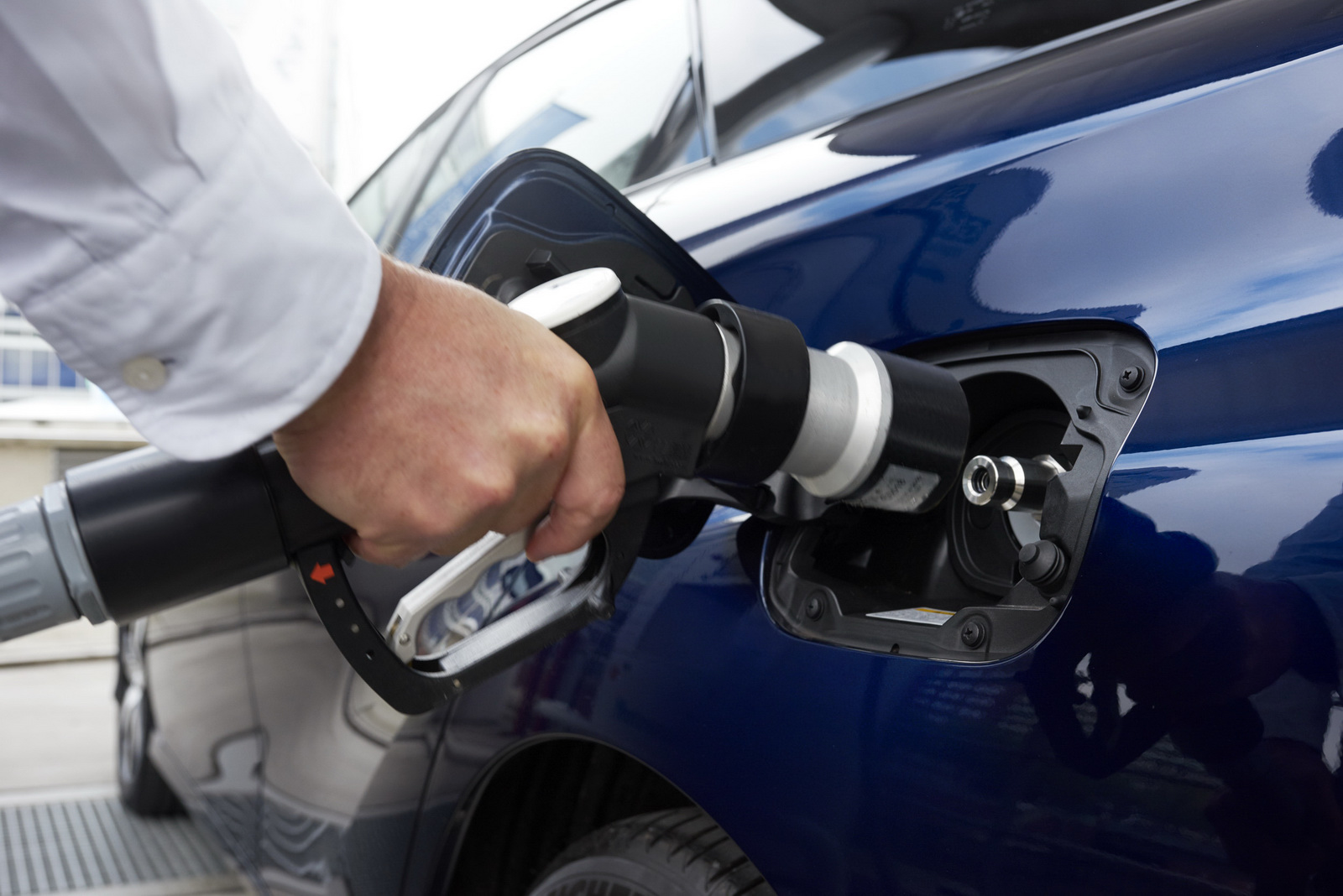Trying to get your head around the technologies vying to power the next generation of cars can be like trying to buy yourself a new games console and getting totally lost as a hardcore PlayStation fan argues with an Xbox devotee three feet from your face over which is best.
The dominant narrative, the one that seems to have gained acceptance among the public and lawmakers, is that electric power is the future of transport. But while the majority of carmakers are moving towards battery-electric vehicles, another group (including some also selling BEVs) thinks electric cars powered by hydrogen fuel cells are the answer.
But if hydrogen fuel cells just create electricity anyway, what makes them any better than battery cars? On a presentation at the Munich Motor Show in which Hyundai revealed its sporty hydrogen-powered Vision FK and plans to launch two fuel cell powertrains in 2023, the company’s Executive VP and Head of Fuel Cell Center came up with a quirky way of explaining the distinction.
“My good old Japanese friend, Professor Hirose once told me that nomads preserve milk as cheese left over from the summer, and use it as a milk substitute during winter,” said Saehoon Kim. “When a renewable energy society is established, hydrogen will playa similar role to cheese,” he added.
Related: Hyundai Introduces New Hydrogen-Powered Concepts, Including A 671 HP Sports Car
Confused? Kim was referring to the way excess electricity generated by solar or wind power can be converted into hydrogen for storage and transport. Currently, it’s not that easy to store excess electrical energy generated by renewable sources. When wind turbines are cranking hard at night, but our demand for power is low because we’re all in bed with the lights off, that means we’re missing out on loads of free electricity.
Hydrogen: Not Just For Cars
By converting that power to hydrogen it can be stored and used later, either to power our homes and factories or to fuel our cars by employing a fuel cell to turn the hydrogen back into electricity when needed. Hyundai is thinking big, not just about cars, but even getting involved in the production of hydrogen. And Kim hints that if the technology improves, fuel cell power units could be daisy-chained like LEGO blocks to power entire cities. A recent report estimated that green hydrogen could supply 25 percent of global energy needs by 2050.
Homing in on transport, hydrogen technology has huge benefits for bigger cars and particularly commercial vehicles, which would need gigantic (read: heavy and expensive) batteries to work over long distances. With a fuel cell, those some vehicles could travel further and fill up in the same time it would take to fill a conventional gasoline or diesel tank.
Hyundai recently announced plans to introduce 30 of its latest hydrogen-powered Class 8 trucks to the United States. The automaker intends to deliver 30 XCIENT Fuel Cell trucks to California by 2023. Looking further ahead, at Munich Hyundai showed its Trailer Drone concept, which comprised a container carried by a pair of autonomous fuel cell e-Bogies.
Is Hydrogen A Silver Bullet?
A fuel cell works by combining hydrogen with air, and the only emission is water, meaning it’s theoretically great for the environment. But detractors say the process of generating that hydrogen, which may involve fossil fuels, isn’t necessarily quite so ecologically sound, although that situation is improving with growth of green hydrogen created only from renewables.
This summer Hyundai and Kia signed a memorandum of understanding with Canadian company Next Hydrogen Corporation to develop an advanced alkaline water electrolysis system that will help to produce ‘green’ hydrogen economically.
Related: Study Claims Electric Vehicles Are More Efficient, Less Risky Than Hydrogen And E-Fuels
Other issues include the higher cost of filling up a hydrogen car versus a BEV and a more problematic stumbling block, which is the lack of infrastructure. Hydrogen powered cars have been around for decades in prototype form and you can currently buy several models, including the Toyota Mirai and Hyundai Nexo. But the hydrogen infrastructure for refueling FCVs is currently way behind the infrastructure for charging electric ones – and just remember how long that took to get going. There were only 48 operating hydrogen filling stations in the entire United States as of mid-2021, most of them in California, according to the U.S. Department of Energy, though 60 more were either being planned or constructed.
Support Is Building
The good news for hydrogen supporters is that various countries’ governments have pledged to back the expansion of a hydrogen infrastructure. But with no Tesla throwing in money to create fueling stations this time, and without the support of key automotive giants like VW and Stellantis, which have backed away from supporting hydrogen, the process might not be as smooth or rapid as it could be.
And you’ll still get a few loonies posting images of the Hindenburg disaster and claiming they’ll never drive a hydrogen vehicle, while quite possibly cruising round with a bunch of ancient gas canisters in their trunk for a camping trip, or even driving a car converted to LPG by some shop down the road from their house.
So are you down with milk or cheese? Or are you lactose intolerant and quite happy with your ICE car, perhaps running on Porsche’s synthetic fuel? Leave a comment and let us know.






